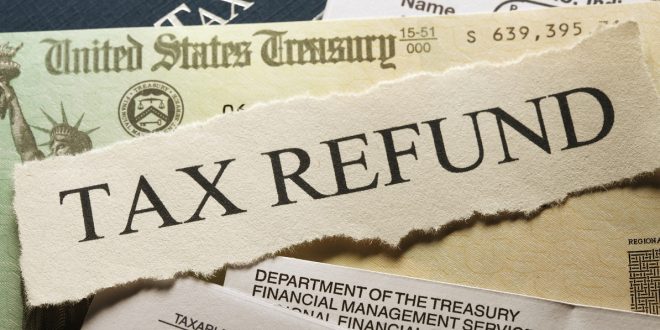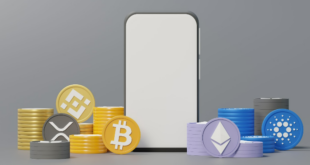Last year, the IRS returned $324 billion. That trickled down to an average of $2,727 per taxpayer. Only time will tell if this year’s tax season is as generous as the last, but anytime the government owes you money (and not the other way around) it’s a good day! You’ll feel like celebrating with your check, but you should rein in the temptation to splurge on a shopping spree or vacation.
A check of $2,000 or more has more practical applications for your finances. Let’s take a look at three ways you can use your tax refund responsibly, so you’ll get the most out of your return.
1. Save it
It may not have the same glitz and glamor as an exotic vacation, but it’s a heck of a lot more practical for your finances. A robust savings account creates a strong foundation for your finances, and it helps you take on your responsibilities with more confidence — from unexpected expenses and essential household repairs to fun splurges and yes, even a vacation if you save up enough.
A sudden boost of two grand would certainly build a healthy savings account. It’s sizeable enough you might even qualify for some of the high-yield savings account located in this list.
With a high APY (or Annual Percentage Yield), these accounts accrue more interest than your money would in a basic savings account. If you don’t withdraw from it often, and you continue to contribute regularly to this account, you’ll meet your savings goals faster.
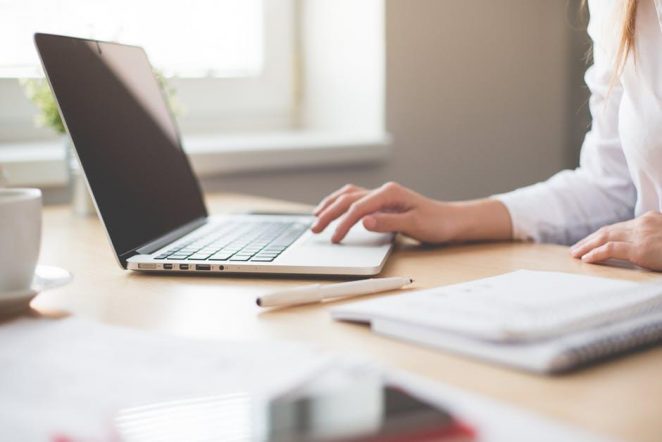
Before you open a brand new account, make sure you know what your goals are.
Do you want to create an emergency fund you plan to withdraw from often?
Will it be better used to start a college fund for your kids?
How you answer will affect what account you choose, as some may have minimum deposit requirements or minimum balances you must keep to avoid penalties.
2. Invest it
Depositing your tax refund into a savings account is a great first step to creating a resilient foundation for your finances. But just as Edmund Hillary didn’t climb Everest in a single stride, you won’t create a mountain of savings with a simple savings account. Even high-yield savings accounts don’t compare to the interest rates of long-term investments.
Long-term investments are ideal for a relatively small sum like $2,000, especially if you choose to play the stock market. Plenty of brokers will let you to invest something this small, but they’ll charge the same fee as with any sized investment.
Should you decide to sell as soon as the price per share goes up, these fees will eat up more of your profit than if you have, let’s say, $200,000 to start with.
Choosing to invest with stable options you don’t plan on touching in at least several years will help prevent fees from taking up your profit. The longer they sit untouched, the more likely they’ll grow in size — maybe even one day hitting $200,000!
Do your research on tax-deferred plans like 401(k)s and Roth IRAs, in addition to stocks, ETFs, and other investment types to learn how your tax refund could grow. These high-yield investments may be a better alternative to savings if you have retirement and other long-term goals in mind.
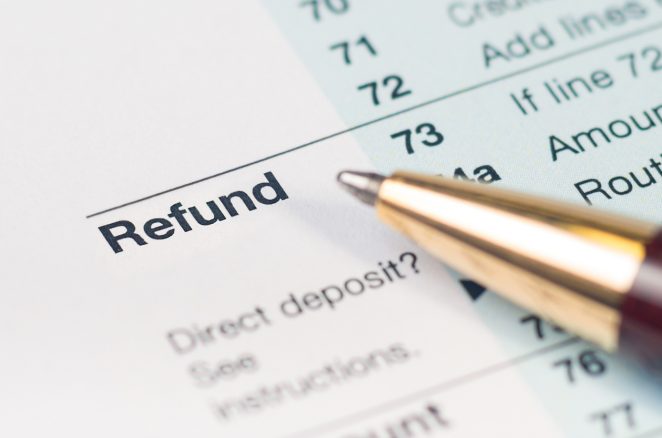
3. Pay off debt
Without any kind of savings, let alone those for retirement, you’re in a precarious financial situation. You’ll have to turn to installment loans, lines of credit, and credit cards to take on bigger purchases and unexpected bills you can’t afford with your income.
Taking out these kinds of personal loans is a normal part of life — the average American carries roughly $137,000 in debt including mortgages, auto loans, and student loans.
Although some debt is normal, accepting loans beyond your ability to repay is not. You should only take out personal loans like installment loans and lines of credit when you can meet their terms and conditions. That way, you can use these online borrowing options when you need it and repay them by their due dates without any problems.
A tax refund would help you meet your obligations on any personal loan, mortgage payment, or student loan — reducing your principal and thereby potentially reducing how much you own in fees and interest.
If you aren’t sure where to use your tax refund first, focus on high-interest credit cards and bad credit loans before you to pay off mortgages and student loans.
Bottom line: think carefully before you use your refund
Although it’s exciting to see that the IRS has to cut you a check rather than the other way around, don’t let it cloud your judgment. Before your extra spending power goes to your head, think about your finances carefully. Savings, investments, and debt reduction may not be as fun at the start, but they’ll pay off in the long-term.
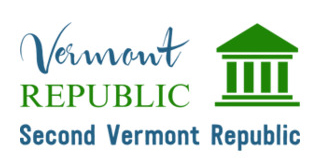 Vermont Republic Second Vermont Republic
Vermont Republic Second Vermont Republic
